- You sell one product with consistent deal values
- Sole focus is new logos
Single Rate Bonus (Quantity)
We see this bonus plan frequently implemented in solar and telecom, where they see consistent deal values. Be aware that this plan does not account for discounting.
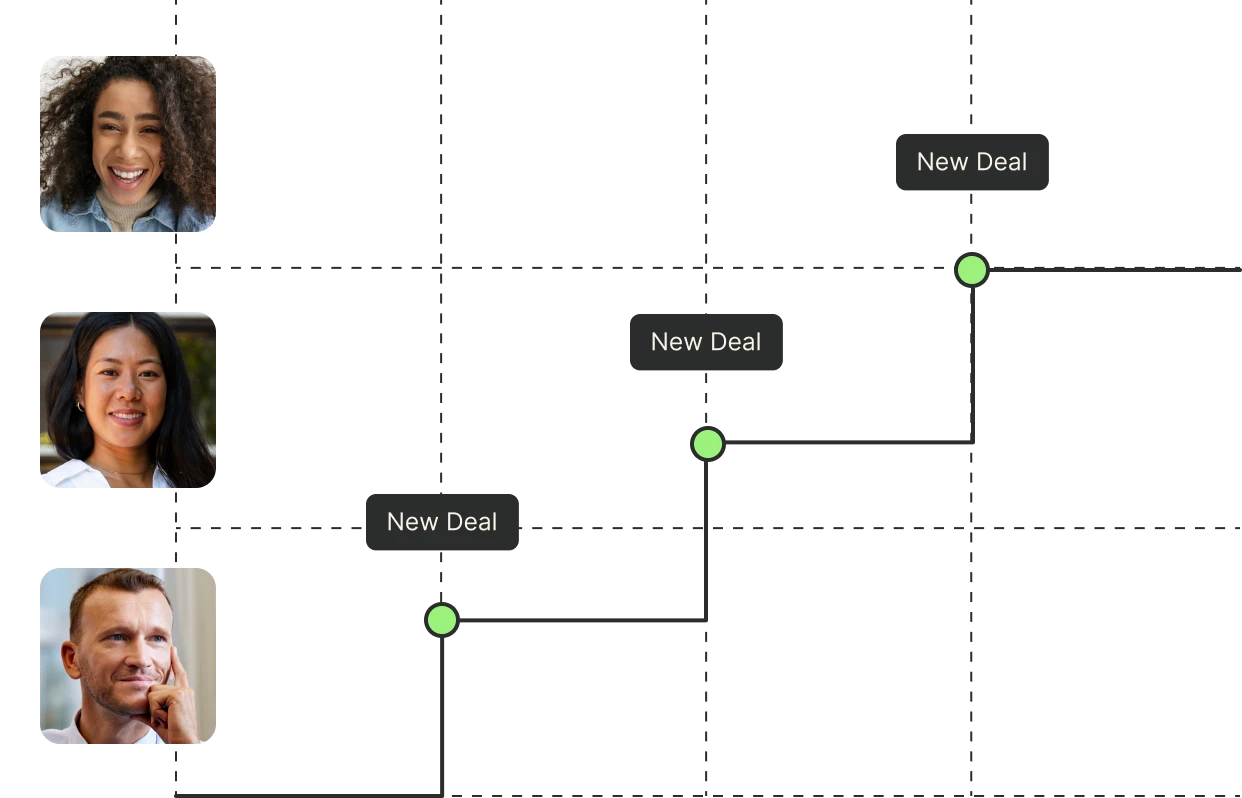
When to use this plan?
Why use a Single Rate Bonus (Quantity) plan?
Easily explained, widely understood, and you can implement changes quickly by increasing or decreasing the bonus
Customize the Commission with Single Rate Bonus Plan Template
Like this plan? Sign up for QuotaPath for free to add your business inputs and adjust the variables.
Forecast earnings & plan performance
See potential earnings based on your inputs and goal attainment progress.
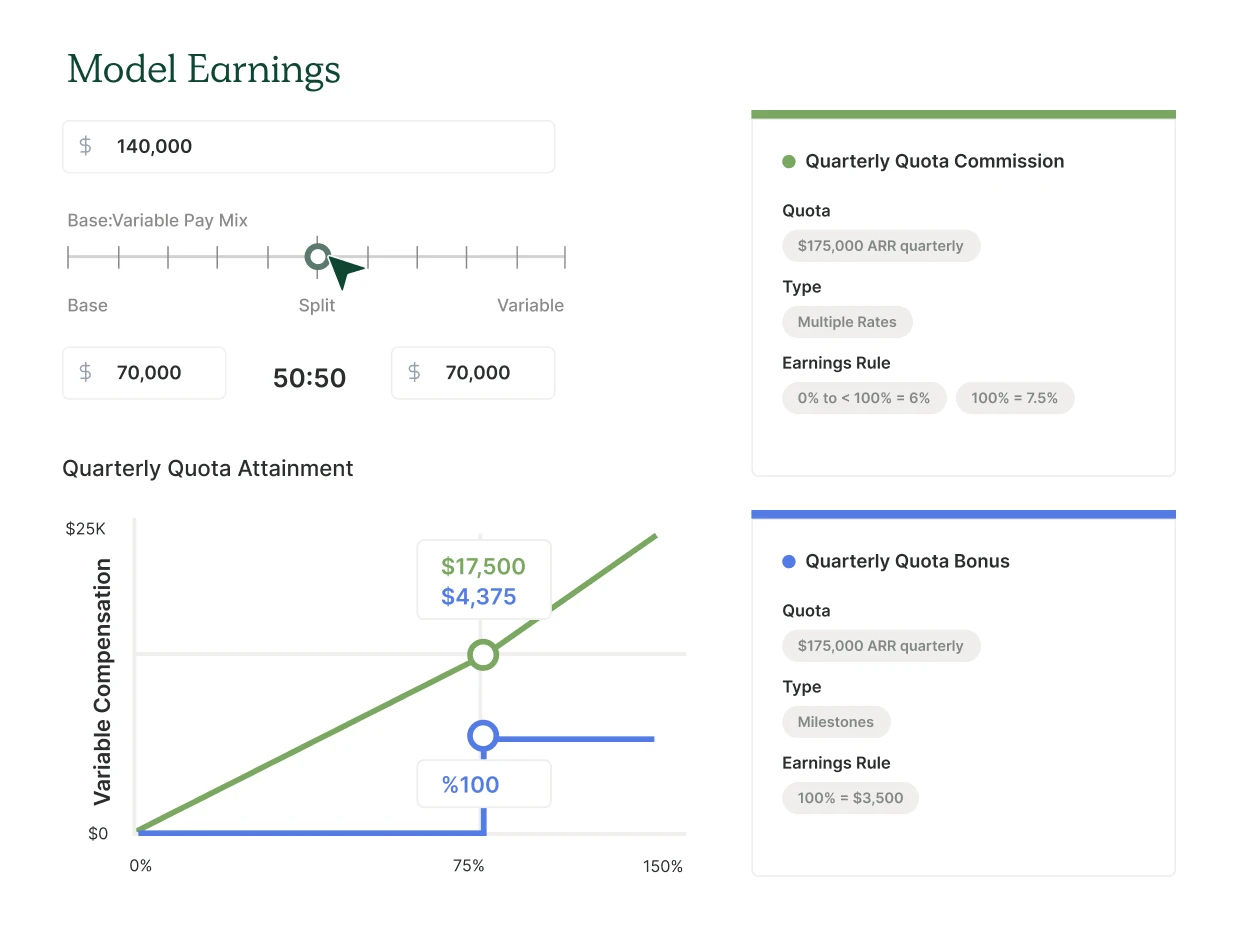
Check the health of your Quota:OTE ratio
Use the calculator to quickly measure how realistic, attainable, and healthy your OTE to quota ratio is.
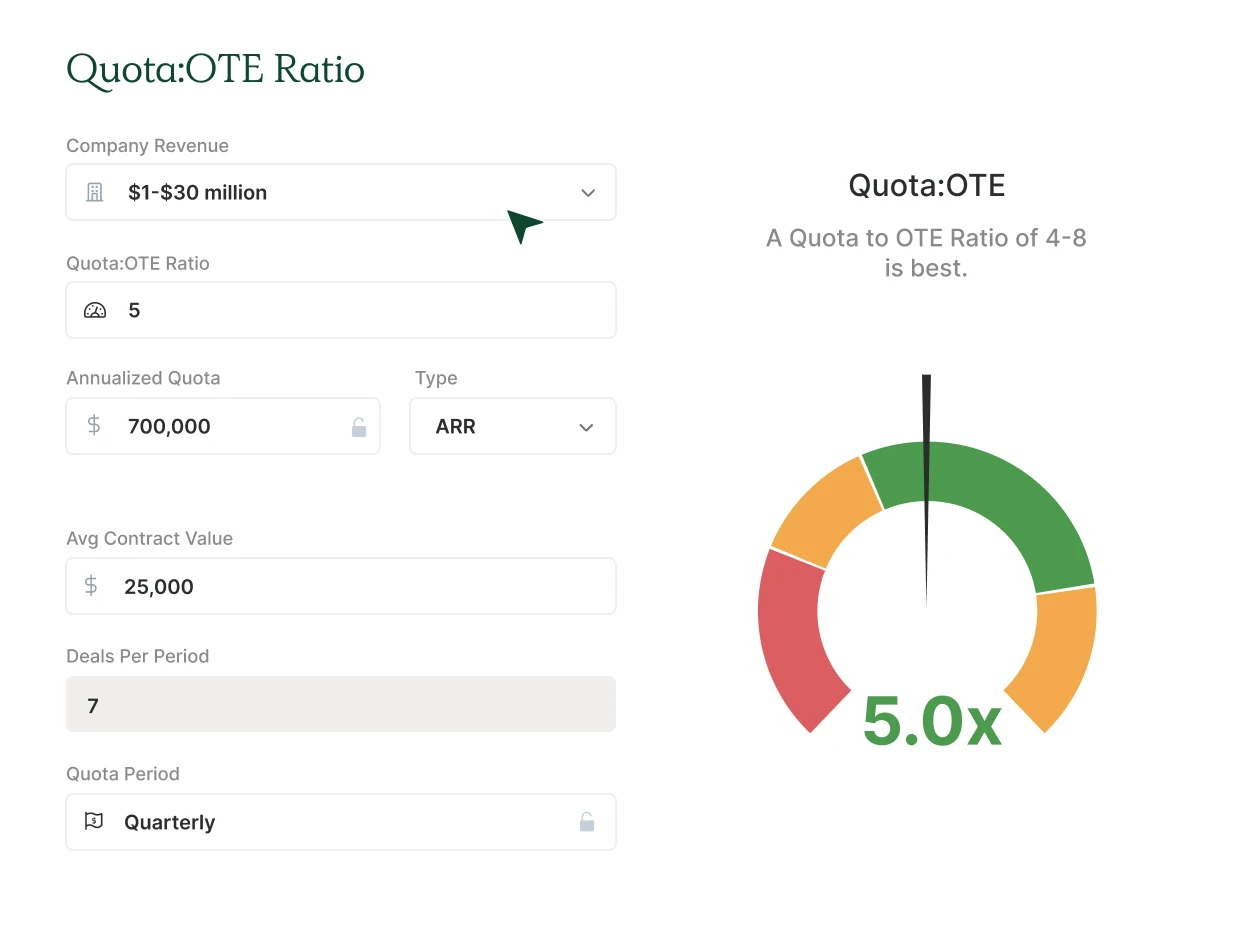
Streamline plan management
Assign the plan to your team and automate sales commission calculations. Be confident your team is being paid fairly and accurately.
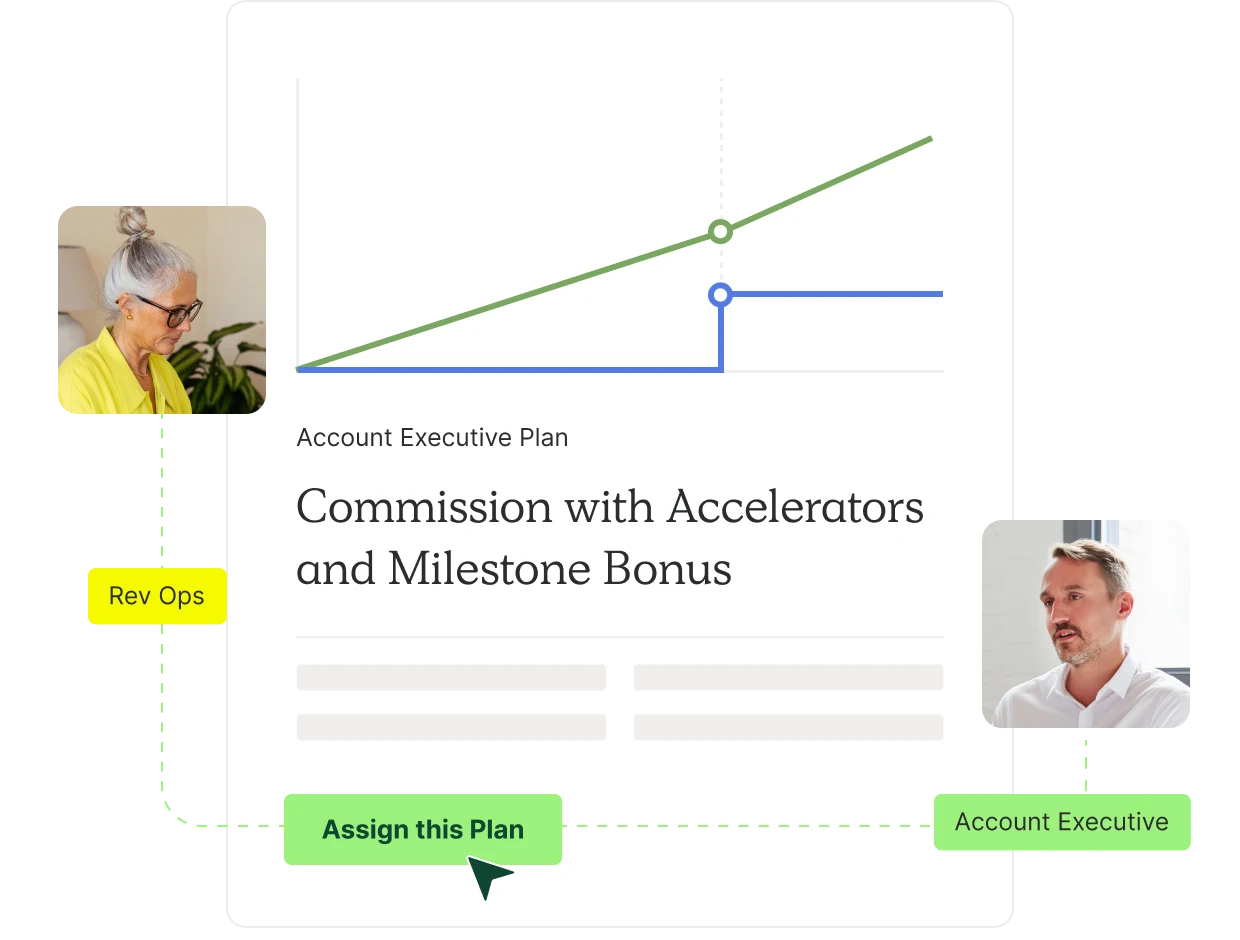
How to adjust this compensation plan template
To customize this plan, you will input these 7 variables.
On-Target Earnings (OTE)
OTE combines base salary with variable pay and represents the total amount of money your reps can expect to earn if they hit 100% of quota.
Pay Mix
Refers to the percentage of a salesperson’s total compensation, made up of base salary, commission, and other incentives. The most common pay mix in SaaS is 50/50.
Company Revenue
Revenue is the total amount of income that a company generates from its primary operations. In SaaS, annual recurring revenue is one of the most important metrics.
Quota:OTE Ratio
This ratio quantifies how much larger a quota is to a sales rep’s OTE. The most common multiplier in SaaS is a quota 5x that of the OTE, but this will vary based on size and stage of the company.
Annualized Quota
An annualized quota is a sales goal that is set for a year.
Average Contract Value
Often abbreviated to ACV, this number represents the average deal size that your company sells.
Quota Period
Your quota period sets the frequency at which your team’s quota resets. In SaaS, the most common quota period is quarterly. However, this number will vary based on your sales cycle.
Frequently asked questions
Why would I use a quantity-based bonus plan?
A quantity-based compensation plan is one of the easiest to understand for reps in sales compensation. You get a set bonus for every single deal you close, no matter how big or small the deal is, the bonus is the same. There are two major reasons why companies use this plan. First, because they have a consistent contract value with minimal variation in contract size. The second reason is that the company is trying to close as many logos as they can, regardless of how big the deals are. This is done occasionally as companies are first starting out and want to make a splash in the market.
What is a single rate, quantity-based bonus plan?
In sales comp, a quantity-based single rate bonus plan means that reps earn the same bonus amount on every single sale. A bonus pay example might include earning $250 per booked deal.
What’s the difference between this plan and a single rate bonus plan that’s based on revenue?
The quantity-based bonus is tied to every deal closed, whereas the Revenue Based Single Rate Bonus depends on the rep’s quota attainment progress. So, under the first, a rep is paid $200 on every sold deal. Under the latter, the rep receives a set bonus amount for each point of quota attainment, for example a $50 bonus for each point of quota attainment.
How does this differ from a milestone bonus?
A milestone bonus is earned when the rep meets designated stipulations and is paid a set amount, as a result. These bonuses do not vary if the rep is below or above these requirements. Meaning, anything less than the quota, and the rep earns nothing. Additionally, the rep is not eligible for additional bonuses within the same quota term after earning the first bonus. With a single rate bonus plan (quantity), however, the rep receives the same, predetermined flat rate on every deal sold within the quota period. No cap.
What’s the difference between sales commissions and bonuses?
Sales bonuses differ from commissions in that bonuses are based on a set amount of money for completing a task. Meanwhile, commissions consist of a percentage of the total revenue from a deal. For example, If a rep gets 10% of every deal closed, that’s commission. If a rep earns $300 for every deal they close, that’s a bonus — a single rate bonus!
What are some common sales compensation best practices?
When it comes to sales compensation and commissions calculations best practices, the best thing you can do as a leader is clearly communicate the methodology behind your sales compensation model to your team. A close second would be to provide every stakeholder tied to commissions with a single source of truth that democratizes the often siloed commission process.
Explore similar compensation plans

Commission with Accelerators & Milestone Bonus
If you’re looking to incentivize consistency and have higher velocities of sales, then this is the plan for you.

Single Rate Bonus (Revenue)
This comp plan works great for businesses with quotas that change throughout the year but the variable remains, like those that sell into education.
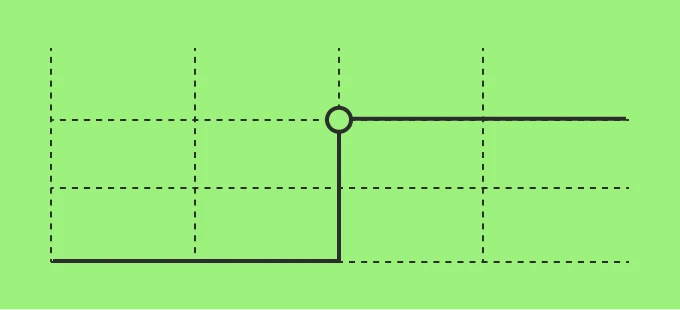
Milestone Bonus
Works best paired with another compensation plan, but you can run it on its own when you need to throttle growth, such as limited inventory.
What industry leaders say
Manage compensation & track commissions with QuotaPath
Deliver visibility, automation, and seamlessness across the entire compensation process.